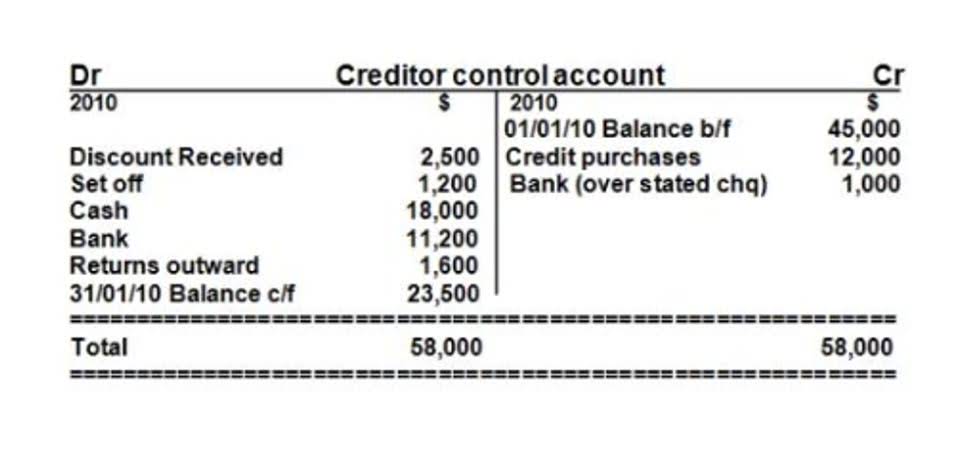
Profits generally refer to the money a company earns after subtracting all costs and expenses from its total revenues. Retained earnings, on the other hand, refer to the portion of a company’s net profit that hasn’t been paid out to its shareholders as dividends. It is a key indicator of a company’s ability to generate sales and it’s reported before deducting any expenses.

Retained earnings on the balance sheet

Yes, retained earnings typically have a credit balance, as this indicates the company has accumulated profits over time. A debit balance would suggest the company has incurred losses or has distributed more dividends than it earned. Cash payment of dividends leads to cash outflow and is recorded in the books and accounts as net reductions. As the company loses ownership of its liquid assets in the form of cash dividends, it reduces the company’s asset value on the balance sheet, thereby impacting RE. At the end of an contra asset account accounting year, the balances in a corporation’s revenue, gain, expense, and loss accounts are used to compute the year’s net income.
Advance Your Accounting and Bookkeeping Career
As an important concept in accounting, the word “retained” captures the fact that because those earnings were not paid out to shareholders Law Firm Accounts Receivable Management as dividends, they were instead retained by the company. Retained earnings are net income (profits) that a company saves for future use or reinvests back into company operations. You should report retained earnings as part of shareholders’ equity on the balance sheet. Dividend payments can vary widely, depending on the company and the firm’s industry. Established businesses that generate consistent earnings make larger dividend payouts, on average, because they have larger retained earnings balances in place.
- Retained earnings could be used for funding an expansion or paying dividends to shareholders at a later date.
- Meaning the retained earnings balance as of December 31, 2022 would be the beginning period retained earnings for the year 2023.
- Businesses that generate retained earnings over time are more valuable and have greater financial flexibility.
- For example, a high credit balance in accounts payable might signal potential liquidity issues, while substantial retained earnings suggest profitability and growth potential.
- For example, if a company declares a stock dividend of 10%, meaning the company would have to issue 0.10 shares for each share held by the existing stockholders.
- Where profits may indicate that a company has positive net income, retained earnings may show that a company has a net loss depending on the amount of dividends it paid out to shareholders.
- Accounts with credit balances provide insight into a business’s financial position.
Types of Accounts with Credit Balances
This reduction happens because dividends are considered a distribution of profits that no longer retained earnings normal balance remain with the company. It can go by other names, such as earned surplus, but whatever you call it, understanding retained earnings is crucial to running a successful business. All of the other options retain the earnings for use within the business, and such investments and funding activities constitute retained earnings. For the past 52 years, Harold Averkamp (CPA, MBA) hasworked as an accounting supervisor, manager, consultant, university instructor, and innovator in teaching accounting online. For the past 52 years, Harold Averkamp (CPA, MBA) has worked as an accounting supervisor, manager, consultant, university instructor, and innovator in teaching accounting online. ☝️ It is compulsory to allocate 5% of profits each year to the legal reserve, until it reaches 10% of share capital.
Retained Earnings Formula: Definition, Formula, and Example
Thus, the balance in Retained Earnings represents the corporation’s accumulated net income not distributed to stockholders. The retained earnings portion of stockholders’ equity typically results from accumulated earnings, reduced by net losses and dividends. Like paid-in capital, retained earnings is a source of assets received by a corporation. Paid-in capital is the actual investment by the stockholders; retained earnings is the investment by the stockholders through earnings not yet withdrawn.


A debit balance, on the other hand, would indicate that the company has accumulated net losses or has declared more dividends than its accumulated earnings. However, a debit balance in Retained Earnings is relatively rare and typically indicates financial distress. This balance signifies that a business has generated an aggregate profit over its life.
What is a statement of retained earnings?
The company records that liabilities increased by $10,000 and assets increased by $10,000 on the balance sheet. Stock dividends are paid out as additional shares as fractions per existing shares to the stockholders. Management knows that shareholders prefer receiving dividends, but they may not distribute dividends to stockholders. If they are confident that this surplus income can be reinvested in the business, then it can create more value for the stockholders by generating higher returns. Retained earnings, on the other hand, specifically refer to the portion of a company’s profits that remain within the business instead of being distributed to shareholders as dividends.

- This is the case where the company has incurred more net losses than profits to date or has paid out more dividends than what it had in the retained earnings account.
- These include net income or loss, dividend payments, and any adjustments due to accounting errors or changes in accounting policies.
- Retained earnings are also called earnings surplus and represent reserve money, which is available to company management for reinvesting back into the business.
- Retained earnings are the portion of a company’s cumulative profit that is held or retained and saved for future use.
- If the company had a total of 100,000 outstanding shares prior to the stock dividend, it now has 110,000 (100,000 + 0.10×100,000) outstanding shares.
- This profit is often paid out to shareholders, but it can also be reinvested back into the company for growth purposes.
- Well-managed businesses can consistently generate operating income, and the balance is reported below gross profit.
Retained earnings are listed under shareholders’ equity, reflecting the company’s accumulated profits. This section of the balance sheet is critical for understanding the financial stability and growth potential of the business. Retained earnings are affected by an increase or decrease in the net income and amount of dividends paid to the stockholders.